Read The
Current Issue
Living Museum
A historic dude ranch hidden in what is now Grand Teton National Park was a prototype of the genre; this summer, preservation work on two of its historic cabins will be finished.
By Dina Mishev // Photography by Ryan Dorgan
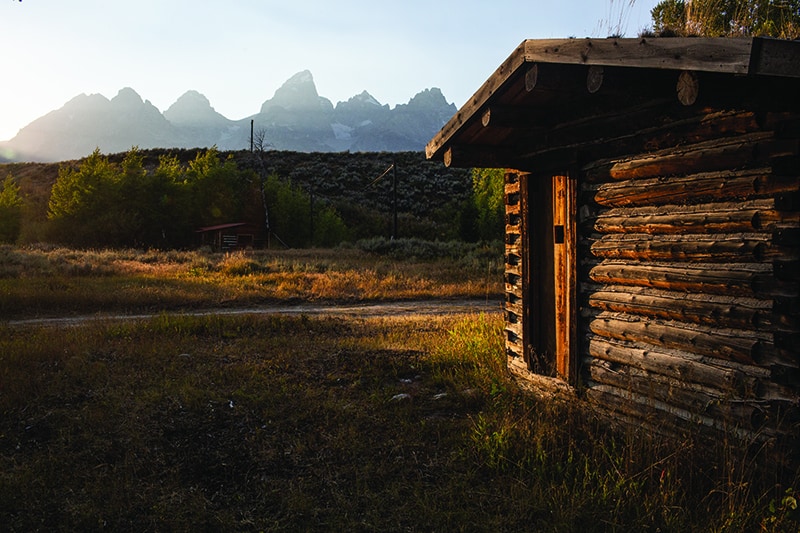
The Bar BC was the second dude ranch in Jackson Hole, founded by Struthers Burt and Dr. Horace Carncross.
“WE BUILT FOR fifteen [people]—and have been enlarging ever since. This is what we have today: forty-five buildings, ranging from single room and double room sleeping-cabins through cabins designed for all kinds of use, to the central cabin with its two dining rooms, its kitchen, its two big sitting rooms, and its two smaller sitting rooms, a cabin ninety feet long one way and sixty feet the other way. We have a blacksmith shop, a garage, a saddle-shed, a granary, a camp storehouse, three ordinary storehouses, a root-cellar, an office, an ice-house, an outfit dining room, five bunk-houses, a store, a laundry, four houses in which live the partners and the upper ranch foreman, and a dance hall, or recreation hall, or whatever you choose to call it.”
Struthers Burt wrote this about the Bar BC dude ranch in his 1924 memoir, The Diary of a Dude Wrangler. Burt and Dr. Horace Carncross opened the Bar BC in 1912. It was the valley’s second dude ranch.
Sometime during World War II, the Bar BC stopped its dude operations, but continued to welcome guests who were looking for a rustic place to stay in Grand Teton National Park.
During its peak years, as many as fifty dudes were guests at the Bar BC. They each paid about $300 a month. Many Bar BC guests returned year after year, and a number went on to establish their own operations elsewhere in the valley, including the White Grass Ranch, Sun Star Ranch, and the STS Ranch. (According to the Jackson Hole Historical Society & Musuem, twelve Jackson Hole dude ranches can trace their origins to a stay at the Bar BC.) Bar BC guests Cissy Patterson and Maud Noble established personal retreats in the valley. (Patterson’s former retreat actually operates as a guest ranch today; it is now called Flat Creek Ranch and is open to the public for multinight stays.) Sometime during World War II, the Bar BC stopped its dude operations, but continued to welcome guests who were looking for a rustic place to stay in Grand Teton National Park (GTNP). In 1987, when Margaretta Corse, the last surviving family member (the wife) of the last of Burt’s partners (Irving Corse) died, the Bar BC became part of Grand Teton National Park.
Despite its addition to the National Register of Historic Places in 1990, between 1987 and last summer the ranch’s buildings and structures were left to molder. But last summer, funded by money raised by Margaretta Corse’s grandson, Charlie Ross, who grew up spending summers at the Bar BC, and the Grand Teton National Park Foundation, the Western Center for Historic Preservation (WCHP), in partnership with Grand Teton National Park, began preservation work on two of the Bar BC’s most important cabins: the Corse Cabin and the Main Cabin. The former was Margaretta’s summer home almost until her death, and the latter was the 90-foot by 60-foot cabin Burt described in his memoir.
“I’m so excited [about the Bar BC preservation] that I can’t even articulate it,” says Katherine Wonson, the WCHP’s director. “The Bar BC is the mother of all dude ranches in this valley. Families who came to it were so enamored with their experience they came back in subsequent years to create either a family ranch or their own dude ranch. As they were building these, it was the Bar BC that was the prototype in their mind of what a ranch was and looked like.”
Aside from serving as an unofficial design guide for more than one dozen other ranches in the valley, the Bar BC is historically important for other reasons. Burt and his wife, Katharine Newlin Burt, were both prolific writers who popularized the idea of dude ranching in the West through their writing. “They were the greatest promoters of ranch tourism in their day,” Wonson says. “They really put dude ranching in Jackson Hole on the map.” Wonson also says that it was Burt who turned the tide of where other dude ranchers stood on the idea of Grand Teton National Park. (The formation of Grand Teton National Park was very controversial, and most locals were initially against it.) Burt went from anti-park to pro-park himself. “If he hadn’t changed his stance and brought others along with him, I don’t know that we’d have a park today,” Wonson says.
The goals of the stabilization work do not include allowing the public to enter the Corse Cabin, but when the Main Cabin is finished, it will be possible to enter it and explore.
WORK TO STABILIZE the Main and Corse Cabins started last summer and is slated to be finished this summer. It is important to note that the Bar BC cabins are being stabilized, which is also known as “preservation” work, rather than rehabilitated. “Preservation work arrests something in its current state of decay and tries to keep it in that form as long as possible,” Wonson says. “Rehabilitation is bringing buildings up to new. A historic building that is preserved won’t look as pretty as a rehabilitated one when it is done, but a preserved building is an authentic experience.”
WHCP Bar BC project manager William Grenier says, “We had to use new material in places, but we try to use in-kind replacements wherever possible.” For example, to match the original logs used, Grenier sourced new logs from the same species (lodgepole) and the same size. (Last summer the WCHP crew replaced twenty-one logs during their twenty weeks working on the site.)
The two cabins’ roofs were trickier. “Traditionally these cabins had rolled roofs,” Grenier says. “But the roofing product we installed is an adhesive-backed rolled roof, which is different than one you just nail. It is a new material that sticks better and has a longer lifecycle; however, it looks exactly like historic rolled roofing.” And then there was the roof color. “There was, I believe, three generations of roofs on the Corse Cabin,” Grenier says. “We had green rolled roofing, red rolled roofing, and cedar shingles.” After much deliberation, the WCHP decided to go with green roofing on everything. “At no point would everything have been all cedar or all red, but everything together was once all green,” Grenier says. (The Main Cabin did not have this problem: “It had deteriorated to the point where its roof was pretty much gone,” Grenier says. Its new roof is also green.)
The goals of the stabilization work do not include allowing the public to enter the Corse Cabin, but when the Main Cabin is finished, it will be possible to enter it and explore. Also, the former dining room floor will be converted to an outdoor picnic area. “The Bar BC is my favorite place on the planet,” says Ross, who still lives in the valley. “I don’t want it to become overrun and Instagrammed to death, but I love the idea of these two cabins now being preserved for the people who randomly happen upon it.”
Directions: The Bar BC is not signed from the Park Loop Rd. (which is part of what makes it special). Drive north from Jackson to Moose Junction. Turn left at the junction onto Teton Park Road and enter Grand Teton National Park. Drive about 4 miles—passing the Bradley/Taggart Lakes trailhead and the Cottonwood Creek Picnic Area. About one-quarter mile past the latter, turn right onto River Road and drive for 2 miles. Park in a small lot near where the road begins to turn north. Walk down the rocky bench to the remaining ranch structures. This drive is recommended for high-clearance vehicles. If the road is muddy, four-wheel drive is also recommended. nps.gov/grte/learn/historyculture/bcran.htm
The Diary of a Dude Wrangler
Originally published in 1924, Struthers Burt’s memoir of his life as a conservationist and dude rancher running the Bar BC, The Diary of a Dude Wrangler, was republished in January by Sastrugi Classics. With a forward by Katherine Wonson, the director of the Western Center for Historic Preservation, the book is beautifully and humorously written and provides insight into life at the Bar BC and into dude ranching in general. For example: “If you want to sum up the dude-business in a sentence, it consists in giving people home-made bedsteads but forty-pound mattresses. … A dude-ranch is not a summer hotel, nor is it a summer boarding-house, much as it may seem like one or the other to the ignorant.” And “People hate to be directed, but they get excessively angry if they aren’t. … The dude-wrangler is a ranch-owner, a cow-man, a horseman, a guide, a wholesale chambermaid, a cook, and storekeeper rolled into one.”
Between tales of life at the Bar BC, Burt offers evocatively written descriptions of the landscape and also wry observations of life and people in general: “No man should be judged by what he doesn’t know, he should be judged only by how quickly and sensibly he assumes new duties.” The Diary of a Dude Wrangler is available at Jackson Hole Book Trader.
To make a gift toward the preservation of historic structures in Grand Teton National Park, contact Cathy Wikoff (cathy@gtnpf.org) at the Grand Teton National Park Foundation.
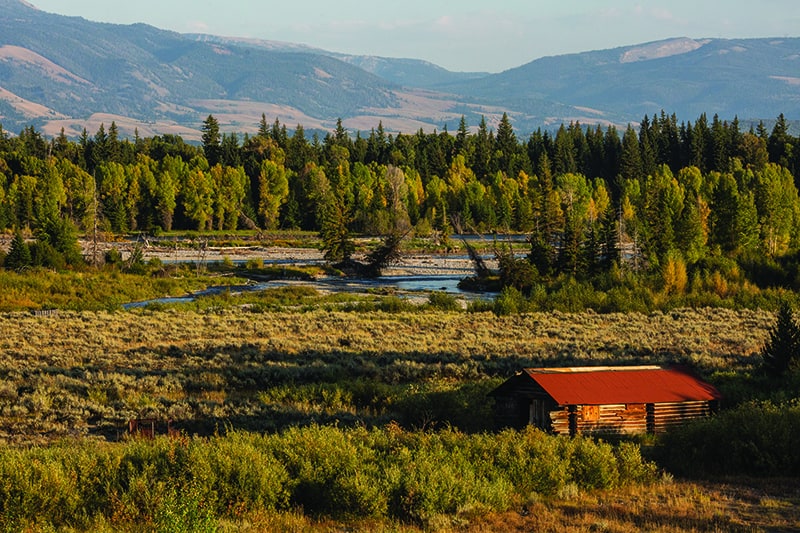
Burt and Carncross chose land along the Snake River for their ranch so that the winds would drive away mosquitoes. By 1917, they had expanded to 600 acres and 26 ranch buildings.
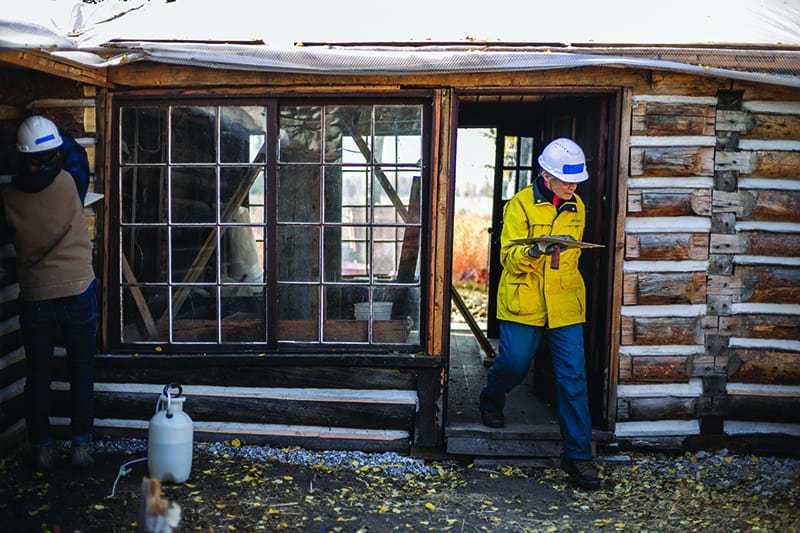
Fresh timber is cut and staged, ready to replace rotting logs in the
Bar BC’s two main cabins.
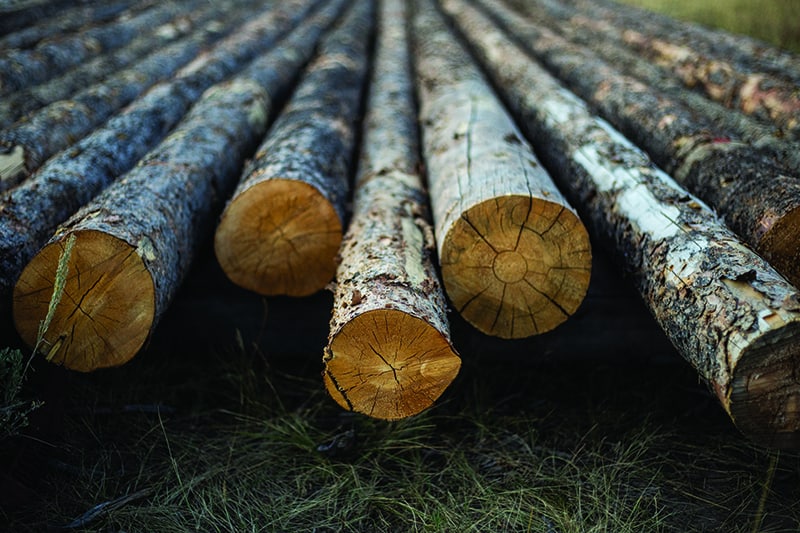
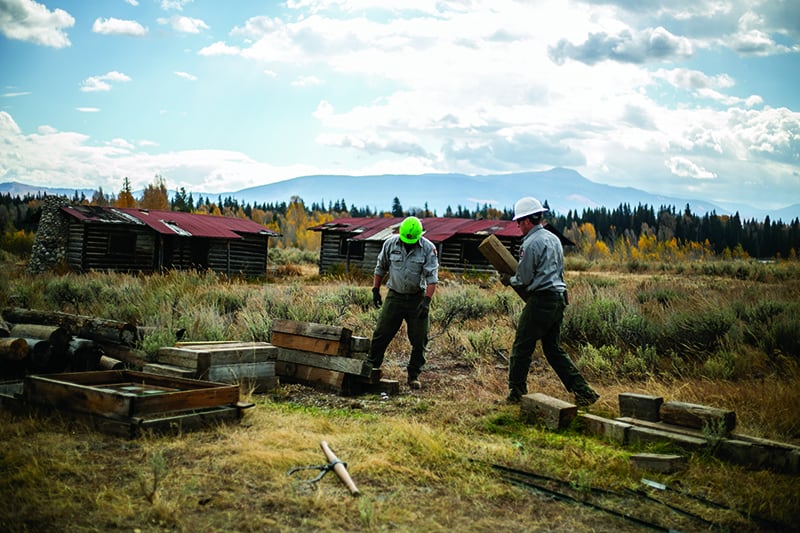
Last summer more than 72.5 tons of trash and debris were removed from the Bar BC.

Some of the Bar BC’s foundation logs now crumble to the touch.
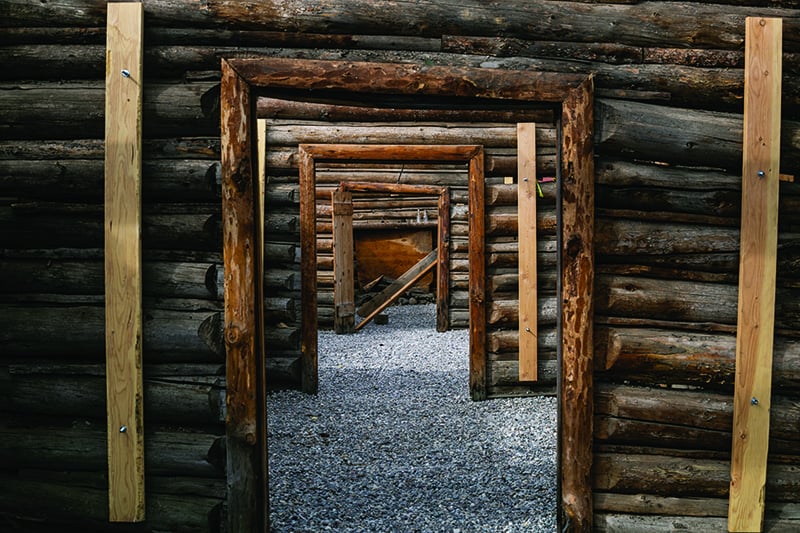
Reinforcements inside the Bar BC’s Main Cabin.
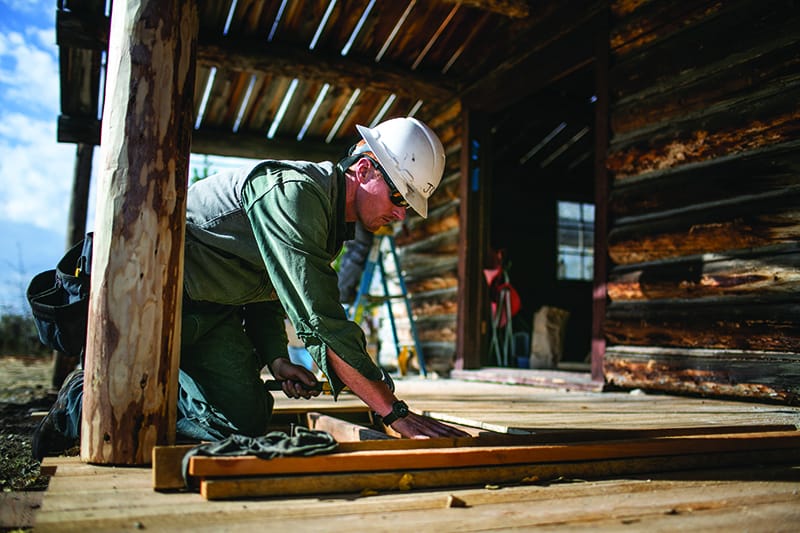
HistoriCorps project supervisor Jon Williams replaces decking outside the Bar BC’s Corse Cabin.
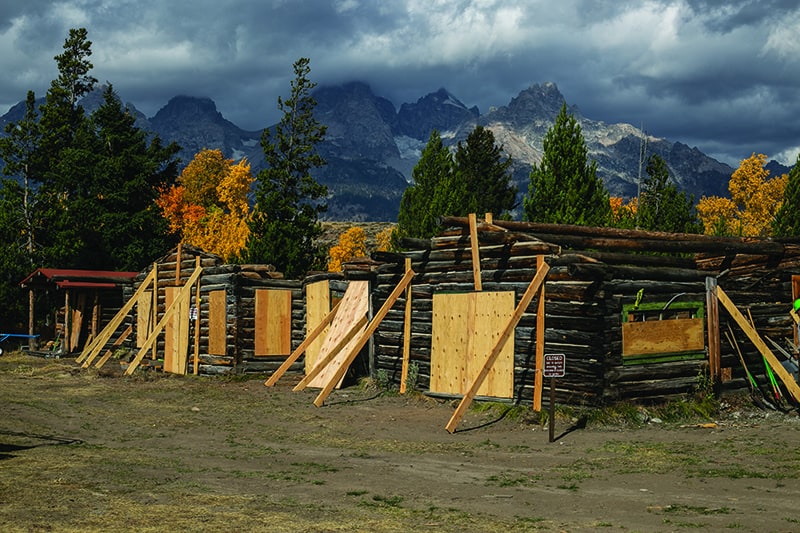
The Bar BC’s Main Cabin was reinforced and boarded up before last winter’s snows fell.




